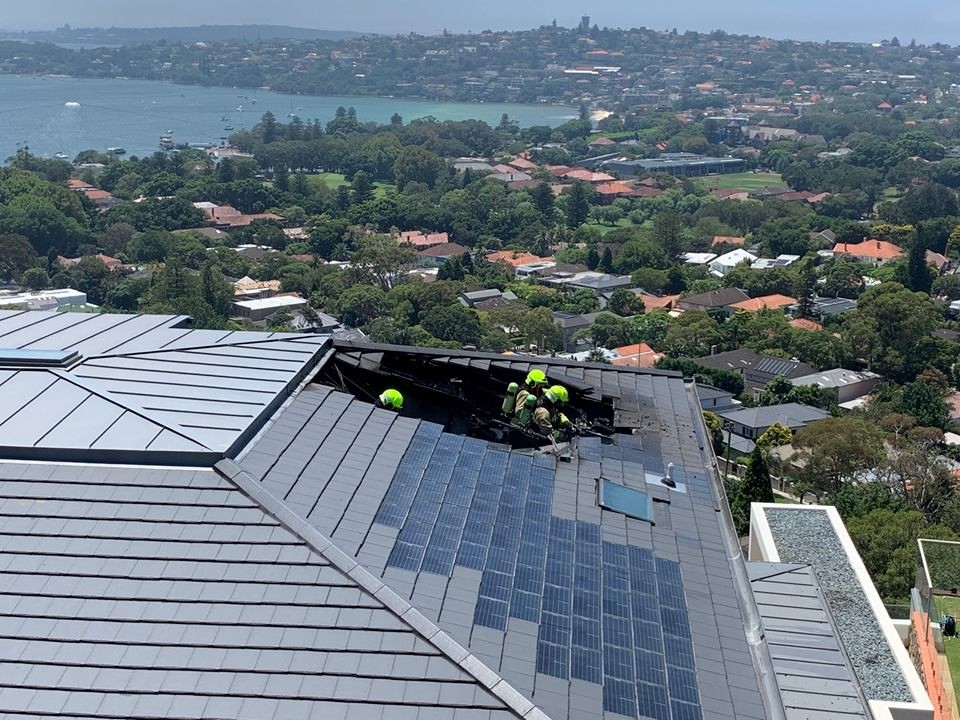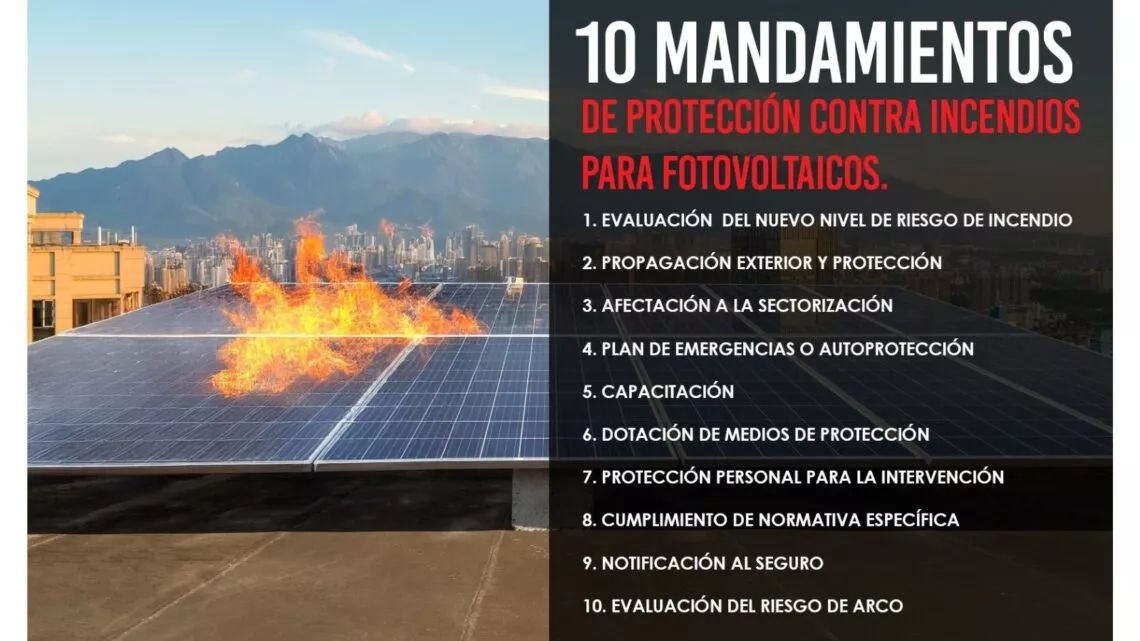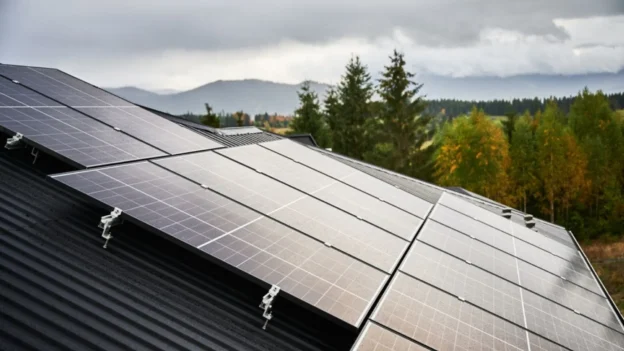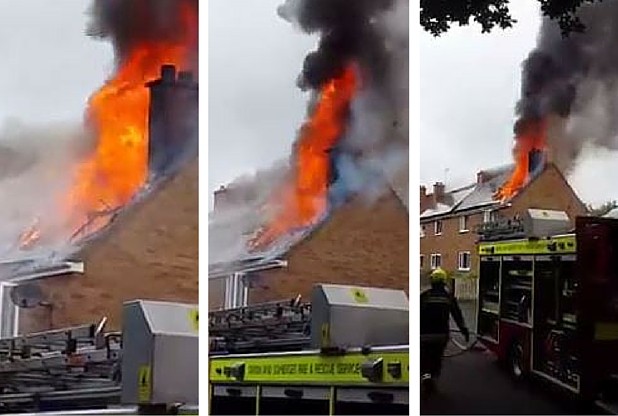
Photovoltaic (PV) systems, commonly known as solar panels, are a growing challenge for the fire and emergency services. For personnel, this can be responding to a solar panel fire, attending to storm or flood damage or encountering a property that has a faulty or substandard solar system installed. Solar panels pose a serious risk to personnel safety due to their capacity to circulate electricity even when switched off.
Statistical evidence published by the Clean Energy Regulator warns that solar panels represent a serious national safety issue. This is supported by the increasing number of solar panel incidents reported by fire and emergency service agencies through the Australian Incident Reporting System.
Solar panel systems are emerging as a new and growing incident category, yet current standard operating procedures still do not adequately address the increasingly obvious safety gaps. Fire and emergency service crews are likely to face solar panel incidents on a daily basis in the near future, but without adequate tools, procedures or training, dangerous scenarios may become more common and increasingly put lives at risk.
- Working amongst damaged and live solar tiles is potentially fatal. Photo: Fire and Rescue NSW
Sobering statistics
Solar panels have experienced a staggering 5,000% increase in Australia over the past ten years. Approximately 20% of Australian homes now have rooftop solar, and the ever-growing number of commercial, industrial and solar farm installations have seen the number of PV systems across the nation surpass two million.
In December 2018, Federal Energy Minister Angus Taylor made headlines when he warned his state counterparts that lives are at risk from unsafe or substandard solar panel installations. Quoting figures produced by the Clean Energy Regulator, he stated that up to one quarter of all rooftop units inspected posed a severe or high risk. Extrapolated against the current number of two million national rooftop installations, this equates to potentially 500,000 unsafe or substandard installations across Australia.
The danger zone
The primary risks associated with solar panels are electric shock and electrocution. As long as solar panels are exposed to light, they will continue to produce potentially lethal amounts of direct current (DC) electricity, known within the industry as the ‘DC danger zone’. This means anyone operating near a solar panel system during daylight hours is always engaging with live electrical equipment.
To put the risk of solar panels into perspective, a domestic 240-volt AC power outlet is usually rated at ten amps and provides 2,400 watts of power. The average size of a residential solar PV installation is five kilowatts, usually configured in multiple strings of up to 600 volts per string. With up to ten amps available, the average residential solar PV array can produce up to 5,000 watts of power. Residential installations of up to ten kilowatts are now common, while commercial installations can be upward of several hundred kilowatts, and generation plants can exceed 100 megawatts or more.
Deadly mistakes
One of the challenges surrounding solar panel safety is the simple fact that the technology is relatively new and has grown so quickly. There are very few true experts in the field of solar safety and authorities are only just starting to recognise the knowledge and safety gaps. As a result of this, emergency service personnel are at risk of making fatal errors on the job.
For example, the practice of ‘tarping’ damaged solar panels is extremely dangerous and operates in clear breach of standard operating procedures, which state that crews should assume the solar power system and surrounding area is live. Standard operating procedures mandate an exclusion zone of at least three metres be established around any damaged solar panel components, and the exclusion zone be increased to eight metres if the components are in contact with conductive materials.
The December 2018 Sydney hailstorms highlighted that this dangerous practice is still being utilised as agencies struggle to adapt and come to terms with responding to incidents involving solar panels. Tarping solar panels is an outdated but persistent practice that is done with good intentions but is ultimately a dangerous solution.
Unanticipated risks: fire and ice
Following the same storm event in Sydney, a new and previously unanticipated risk was highlighted when hail damage to solar panels led to secondary fire incidents. One example was in the Sydney suburb of Moorebank, where a factory’s roof top solar panel system had sustained heavy hail damage. Although power had been subsequently isolated, hot and sunny conditions returned and, three days later, the damaged panels began arcing and sparked a significant roof fire that put the entire factory at risk.
There are still many rooftops across Sydney with hail-damaged solar panels. Some owners remain oblivious to the fact that these systems present a significant ongoing fire risk until the solar panels are disconnected and removed.
Toxic problem
Sandwiched between the protective glass, frame and back sheet of the solar panel, solar cells present no risk to health, but once a panel burns and the solar cells are exposed, the burning panels can be highly toxic and dangerous to humans. Solar cells contain the carcinogens cadmium telluride and gallium arsenide, as well as the potentially lethal phosphorous. Inhalation of these toxic nano-particles cause silicosis of the lungs and should be treated with the same precautions as asbestos. Self-contained breathing apparatus (SCBA) should always be utilised in incidents involving burning solar panels.
The full scope of solar panel risk
With solar panels now installed on one in five buildings across the country it is important to consider the broader range of incidents involving structures and fire. For every incident initiating from a fault in the solar panel system, there are many more where the ignition cause is unrelated but where the fire may encroach upon the solar panel system and compromise safety. In these scenarios, it is just as important to isolate the power from the solar panel system as it is to isolate mains power from the grid. Up until now this has proven problematic for firefighters, and in many cases defensive tactics have been employed because solar panel systems could not be easily or reliably isolated.
Solar solutions
There is currently a range of electro-mechanical solutions available on the market including isolation switches, micro-inverter systems and DC-optimising equipment, but all of these options operate downstream of the panels and do not isolate the power produced by the panel itself. An Australian innovation, PV Stop, has recently been developed and is now used as a reactive solution to safely isolate the power produced by solar PV systems. It acts as a liquid tarp that can be sprayed over solar panels to block light from hitting the panels, which isolates the power produced by the system in seconds and eliminates the risk of high voltage DC electrocution.
A critical consideration for fire and emergency services agencies when adopting a new product is the assurance that the product is safe for their personnel, the community and the environment. PV Stop, which was awarded the FPA Australia’s Innovative Product and Technology Award in 2018, was tested by the NSW Environment Protection Agency for harmful elements and has been deemed safe for the environment and personnel working in the vicinity of solar panels. This is just one example of the industry’s step toward adapting to more environmentally friendly practices and products that do not limit our ability to embrace clean energy solutions.
Working toward a cleaner future
As technology continues to evolve at its current rapid rate, it is critical that safety innovations keep pace to ensure the fire and emergency services sector can maintain its commitments to emission reductions and environmental protections, without sacrificing the safety of personnel. Actions during the December 2018 hailstorms in Sydney show the sector needs to do more to adapt to emerging technologies and their associated risks, but proactive fire and emergency service agencies can continue to address these knowledge and resource gaps by seeking information, continually improving their practices and driving the development of innovative new safety technologies.
Read about the innovative award winning PVStop solution.
This article first appeared in Fire Australia, Issue 2, 2019.


